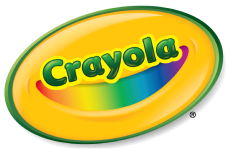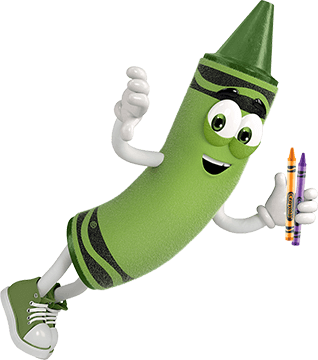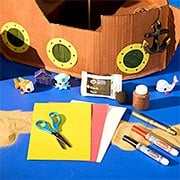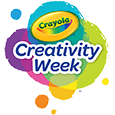De acuerdo con el Definición de "crayón" del Diccionario Merriam-Webster, La pronunciación correcta de crayón es en dos sílabas: 'krā-än. Sin embargo, pueden ocurrir variaciones en la pronunciación debido a dialectos individuales y regionales. Es importante tener en cuenta que "crayón" es un término genérico, mientras que Crayola es el® nombre de nuestra empresa y una marca registrada.
Si tienes preguntas adicionales, ¡nos encantaría saber de ti! No dudes en llamarnos o enviarnos un mensaje de texto al 1-800-CRAYOLA días laborables entre las 9 AM y las 4 PM hora del Este. Si prefieres enviarnos un correo electrónico, visita nuestra página de contacto.
Preguntas relacionadas
Explora respuestas a preguntas comunes, consejos útiles para eliminar manchas e ideas creativas para aprovechar al máximo nuestros materiales de arte y recursos gratuitos.
-
Crayola® Air-Dry Clay, whether wet (as sold) or dried, may be disposed of as household waste. There are no known restrictions for its transportation or disposal. Typical curbside household waste systems may be used for environmentally safe disposal.
-
Crayola® Model Magic®, whether still wet (as sold) or dried, may be disposed of as household waste. There are no known restrictions for its transportation or disposal. Typical curbside-pickup household waste systems may be used for environmentally safe disposal.
-
The first part of the Crayola Crayon color name is an adjective describing the second color name on the crayon. Green-blue is really blue with a touch of green, while blue-green is really green with some blue pigment in the crayon. The same holds true for orange-red and red-orange.
-
It is difficult to provide an exact shelf life for Crayola products because it depends on how and where they have been stored. Our products are generally tested on the basis of how they are used, rather than how long they have remained unused. We stand behind the Crayola brand name and will work to take care of any quality issue you may encounter.
-
What are skin tones?
Your skin tone is the genetic amount of melanin, naturally occurring dark brown or black pigments, in the outermost layer of your skin. Skin tones can change over time for various reasons.
What is your skin tone?
There are 3 traditional skin tones: Light, Medium, and Deep.
- Light or fair skin tone: Contains a small amount of melanin within the skin.
- Medium skin tone: Contains a fair amount of melanin within the skin, is a neutral color, and has a beige appearance. This skin tone is often referred to as an “olive” color.
- Deep skin tone: Contains a large amount of melanin within the skin.
What are undertones?
Undertones are the natural colors underneath the surface of your skin. Because undertones are under the surface of the skin, you can have the same skin tone as another person, but have a completely different undertone. Undertones are not based on skin tone. For instance, a light skin tone can have a warm undertone and a deep skin tone can have a cool undertone. Also, undertones remain the same, even when you tan. There are 3 traditional undertones: Rose, Almond, and Golden.
- Pink, blue, and/or red hues under the skin = Rose, pink, or cool undertone
- A mixture of warm and cool hues typically the same color as your skin tone = Almond, neutral, or olive undertone
- Peach, yellow, and/or gold hues under the skin = Golden or warm undertone
What is your undertone?
You can identify your undertone by using the color of your veins. In natural light, what color are the veins under your skin on the inside of your arm or wrist?
- Blue and/or purple veins = Rose or cool undertone
- Colorless, same color as your skin, and/or a combination of blue and green veins = Almond or neutral undertone
- Green and/or olive veins = Golden or warm undertone
Tips for selecting your Crayola® Colors of the World® skin tone crayon color:
- Check out the color panels on the side of the Colors of the World crayon box.
- Match: Use crayon box color panels or create color swatches.
- Select: Pick colors closest to your skin tone.
- Color: Draw your #TrueSelfie with your unique colors!
Another way to find your skin tone crayon is to color a small area on a piece of paper with the crayon colors closest to your skin tone. Compare the areas with the inside of your arm or wrist and select the crayon color that best matches your skin tone.




